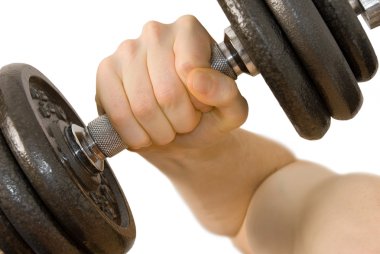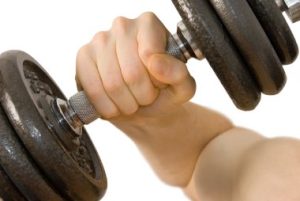
How To Lose Weight By Lifting Weights (5 Helpful Exercises)
How to lose weight by lifting weights, If you’re looking to shed pounds and reshape your body, it’s time to think beyond the treadmill. Lifting weights isn’t just for bodybuilders; it’s one of the most effective ways to lose weight, burn fat, and build lean muscle. Imagine transforming your metabolism into a fat-burning machine, even while you’re resting. By incorporating weightlifting into your fitness routine, you can sculpt your body, boost your metabolism, and achieve sustainable weight loss in a way that cardio alone simply can’t match. Ready to redefine your approach to fitness? Let’s dive into how lifting weights can be your secret weapon for weight loss.

How To Lose Weight By Lifting Weights
Lifting weights is an effective way to lose weight by increasing muscle mass, boosting metabolism, and burning calories even at rest. Strength training helps reduce body fat while toning your body, making it a key component of any weight loss program. By focusing on compound movements and lifting heavier weights over time, you can achieve sustainable fat loss.
The Science Behind Weight Loss with Strength Training
Losing weight through lifting weights centers on the principle of increasing muscle mass to boost your metabolism. When you lift weights, you engage in resistance training, which breaks down muscle fibers, requiring your body to repair and build them stronger. This process requires energy, leading to increased calorie burn both during and after your workout. Unlike cardio, which primarily burns calories during exercise, weight lifting creates an afterburn effect known as excess post-exercise oxygen consumption (EPOC). This means your body continues to burn calories long after your workout is over, aiding in weight loss.
Benefits of Lifting Weights for Fat Loss
Lifting weights is not just about gaining muscle; it’s also a powerful tool for fat loss. By lifting heavier weights and progressively overloading your muscles, you stimulate muscle growth, which increases your resting metabolic rate (RMR). This is the number of calories your body needs to maintain basic functions like breathing and digestion. The higher your RMR, the more calories you burn at rest, which is why strength training is crucial for those looking to lose weight. Incorporating compound exercises like squats, deadlift, and bench presses into your routine can maximize fat loss by engaging multiple muscle groups, leading to greater calorie expenditure.
How to Structure Your Weightlifting Routine for Weight Loss
To lose weight effectively through weight lifting, focus on a well-rounded strength training program that targets all major muscle groups. Aim for at least three to four sessions per week, with each session lasting around 45 minutes to an hour. Start with a warm-up to get your muscles ready, followed by a combination of compound and isolation exercises.
Compound exercises like deadlifts, bench presses, and rows engage multiple muscle groups, burning more calories. Pair these with isolation exercises like bicep curls or leg extensions to target specific muscles and enhance muscle definition. Don’t forget to gradually increase the weight you lift to continually challenge your muscles, promoting growth and fat loss.
Combining Weightlifting with a Healthy Diet for Optimal Results
While lifting weights is crucial for weight loss, it must be paired with a healthy diet for the best results. Focus on a balanced diet rich in lean proteins, whole grains, healthy fats, and plenty of fruits and vegetables. Protein, in particular, is essential for muscle repair and growth, making it a vital component of your diet. Track your calorie intake to ensure you’re in a caloric deficit, meaning you consume fewer calories than you burn. This deficit, combined with the increased calorie burn from weight lifting, will lead to effective and sustainable weight loss.
Staying Consistent and Tracking Progress
Consistency is key when it comes to losing weight through lifting weights. Regularly monitor your progress by tracking the weights you lift, the number of sets and reps, and your overall body composition. Use apps or journals to keep a record of your workouts and dietary intake. Adjust your routine as needed to continue making progress, and remember that weight loss is a gradual process. Patience and persistence are crucial for long-term success.
The Science Behind Weight Loss Through Lifting Weights
Caloric Balance
Weight loss fundamentally hinges on the concept of caloric balance, which is the relationship between calories consumed (calories in) and calories expended (calories out). To lose weight, one must create a caloric deficit, meaning you burn more calories than you consume. Strength training, or lifting weights, plays a crucial role in this process by increasing your body’s overall energy expenditure.
When you lift weights, you engage your muscles in resistance exercises that not only burn calories during the workout but also stimulate muscle growth and repair. This muscle-building process is energy-intensive and increases your resting metabolic rate, meaning you burn more calories even when you’re not exercising. Over time, as you build more muscle, your body becomes more efficient at burning fat, making it easier to maintain a caloric deficit and achieve sustainable weight loss.
Muscle Mass and Metabolism
Lifting weights is a highly effective strategy for weight loss, primarily due to its impact on muscle mass and metabolism. Muscle mass plays a crucial role in increasing the resting metabolic rate (RMR), which is the number of calories the body burns at rest. This is because muscle tissue requires more energy to maintain than fat tissue; therefore, as muscle mass increases, the body’s RMR rises, leading to higher calorie expenditure throughout the day.
Additionally, resistance training elevates post-exercise oxygen consumption (EPOC), also known as the afterburn effect. After a weightlifting session, the body continues to consume more oxygen and burn calories at an elevated rate as it works to restore itself to pre-exercise levels. This effect can last for hours or even days, further contributing to calorie burn and overall weight loss. Thus, incorporating weightlifting into a fitness regimen not only builds muscle but also enhances metabolic rate and prolongs calorie expenditure beyond the workout itself.

Hormonal Impact
Lifting weights plays a significant role in weight loss, largely due to its impact on hormone regulation and muscle metabolism. When you engage in resistance training, your muscles experience micro-tears that need repair, a process that boosts your basal metabolic rate (BMR) and increases calorie expenditure. This is where hormones like insulin, cortisol, and growth hormone come into play. Insulin helps regulate blood sugar levels and facilitates nutrient uptake into cells, promoting muscle growth and repair when its function is optimized.
Cortisol, often referred to as the stress hormone, can contribute to fat accumulation if chronically elevated, but regular strength training helps manage its levels, reducing its potential negative effects. Growth hormone, which is released in response to intense exercise, promotes muscle synthesis and fat breakdown. Consequently, lifting weights enhances the balance of these hormones, leading to more effective weight management and muscle development. By improving insulin sensitivity, controlling cortisol levels, and increasing growth hormone release, weight lifting creates a favorable hormonal environment for weight loss and overall metabolic health.
Fat Loss vs. Weight Loss
Weight loss is often misunderstood, as it involves more than just shedding pounds; it requires differentiating between losing fat and losing weight. Weight loss generally refers to a reduction in total body weight, which can include fat, muscle, and water. In contrast, fat loss specifically targets the reduction of body fat while preserving lean muscle mass. Lifting weights plays a crucial role in this process.
Resistance training helps to maintain and build muscle mass even while in a calorie deficit, which is essential for achieving fat loss. When you lift weights, you create micro-tears in your muscle fibers, and as these fibers repair, they become stronger and larger. This process increases your resting metabolic rate, meaning you burn more calories at rest. Additionally, muscle tissue is more metabolically active than fat tissue, so preserving muscle mass helps ensure that the weight you lose comes predominantly from fat. Therefore, incorporating weight lifting into a weight loss regimen not only helps in burning calories but also in preserving muscle mass, leading to a healthier and more sustainable body composition.
Designing an Effective Weight Lifting Program for Weight Loss
Types of Weight Lifting Exercises
Designing an effective weight lifting program for weight loss involves incorporating both compound and isolation exercises to maximize caloric burn and muscle development. Compound exercises, such as squats, deadlifts, and bench presses, should be the foundation of the program. These exercises engage multiple muscle groups simultaneously, enhancing overall strength and increasing metabolic rate, which contributes to greater calorie expenditure.
Incorporating isolation exercises like bicep curls and tricep extensions can complement the program by targeting specific muscles for balanced development and improved muscle tone. A well-rounded routine should prioritize compound movements to build muscle mass and strength, while isolation exercises can be included to refine and sculpt targeted areas. By strategically combining these types of exercises, individuals can effectively enhance their weight loss efforts while promoting muscle growth and functional strength.

Choosing the Right Weight and Reps
Designing an effective weight lifting program for weight loss involves careful consideration of weight selection and rep ranges. When choosing the right weight, aim for a resistance that challenges your muscles but allows you to maintain proper form. A good rule of thumb is to select a weight that makes the last few reps of each set feel challenging yet achievable.
For weight loss, integrating both low and high rep ranges can be beneficial. Low reps (around 6-8) with heavier weights promote muscle growth and strength, which can increase your resting metabolic rate. On the other hand, high reps (12-15 or more) with lighter weights help to enhance muscular endurance and can lead to greater calorie burn during your workout. Balancing these rep ranges throughout your program helps to maximize muscle engagement and calorie expenditure, contributing to more effective weight loss.
Workout Structure
Designing an effective weight lifting program for weight loss involves careful consideration of workout structure and progression. Aim for a frequency of 3-5 times per week to maintain consistency while allowing adequate recovery. Full-body routines, performed 2-3 times a week, are efficient for beginners and those looking for overall conditioning, as they target all major muscle groups in each session.
In contrast, split routines, which involve targeting specific muscle groups on different days, can be advantageous for more advanced lifters aiming for hypertrophy or focusing on specific areas. Regardless of the approach, the key to continuous progress is progressive overload—gradually increasing the weights, reps, or intensity to challenge your muscles and prevent plateaus. This principle ensures that your body keeps adapting, which is crucial for achieving sustained weight loss and muscle development.
Incorporating Cardio
Designing an effective weight lifting program for weight loss requires a strategic balance between resistance training and cardiovascular exercise. To achieve optimal fat loss, it’s essential to integrate both weight lifting and cardio in a well-rounded fitness plan. Weight lifting builds muscle, which boosts metabolism and enhances calorie burning even at rest, while cardio accelerates calorie expenditure and improves cardiovascular health. Incorporating High-Intensity Interval Training (HIIT) can be particularly effective as it combines short bursts of intense activity with brief recovery periods, elevating heart rate and increasing calorie burn during and after exercise.
Conversely, steady-state cardio, involving consistent moderate-intensity exercise, is beneficial for endurance and can help create a calorie deficit when performed regularly. A balanced approach might include several days of weight lifting complemented by a mix of HIIT and steady-state cardio sessions. This combination maximizes fat loss by leveraging the benefits of both training modalities, promoting a higher overall metabolic rate and enhancing long-term weight management.

Nutrition and Recovery
Importance of Nutrition in Weight Loss
Nutrition plays a crucial role in weight loss and recovery, particularly when lifting weights. To effectively support weight loss while preserving muscle mass, it’s essential to balance macronutrients—proteins, carbohydrates, and fats. Protein is paramount as it helps build and repair muscle tissues, aiding in recovery and enhancing muscle gain. Carbohydrates provide the energy needed for intense workouts and help replenish glycogen stores, ensuring sustained performance and reducing fatigue.
Fats, while often misunderstood, are vital for hormone production and overall health, supporting metabolic functions. Creating a calorie deficit—consuming fewer calories than expended—is key to weight loss, but it must be done strategically to prevent muscle loss. By prioritizing high-quality protein, managing carbohydrate intake around workouts for energy, and including healthy fats, individuals can maintain muscle mass, support recovery, and achieve sustainable weight loss.
Meal Timing and Frequency
Meal timing and frequency are essential; consuming balanced meals throughout the day ensures a steady supply of nutrients and energy, which supports optimal performance and recovery. Pre-workout nutrition, ideally consumed 1-2 hours before exercise, should include a mix of carbohydrates and protein to fuel the workout and prevent muscle breakdown.
Post-workout nutrition is equally important; a meal or snack rich in protein and carbohydrates helps replenish glycogen stores and promote muscle repair. Intermittent fasting, a popular dietary approach, can affect weight lifting and fat loss differently for individuals. While some find it helps with fat loss and simplifies meal planning, it may impact performance and recovery if not managed carefully. It’s essential to tailor meal timing and nutrient intake to your specific goals, workout intensity, and personal preferences to maximize benefits from weight lifting.
Supplements
Nutrition play crucial roles in weight loss when lifting weights. While lifting weights builds muscle and boosts metabolism, proper nutrition ensures optimal recovery and supports fat loss. Common supplement like protein powder help meet protein needs, essential for muscle repair and growth, while creatine enhances strength and endurance, contributing to more effective workouts.
Branched-chain amino acids (BCAAs) can aid in reducing muscle soreness and promoting recovery. Additionally, vitamins and minerals are vital for overall health and effective weight loss. Calcium and vitamin D support bone health and muscle function, while omega-3 fatty acids reduce inflammation and improve heart health. A well-rounded approach, including a balanced diet and appropriate supplements, can enhance recovery and maximize the benefits of weight training in your weight loss journey.
Recovery Strategies
Proper nutrition provides the essential building blocks for muscle repair and growth, which is crucial after intense weight training. Rest and recovery are equally important; they allow the body to repair and strengthen muscles, ultimately contributing to improved performance and weight loss. Sleep, in particular, is a fundamental component, as it affects hormone levels, including those that regulate hunger and metabolism.
Inadequate sleep can impair workout performance and hinder weight loss progress. Active recovery techniques, such as stretching, foam rolling, and yoga, also aid in reducing muscle soreness and improving flexibility. These methods help alleviate tension, enhance circulation, and promote overall recovery, which is essential for sustaining a consistent and effective weightlifting regimen.
Overcoming Challenges
Common Obstacles in Weight Loss
Overcoming challenges in weight loss can be significantly aided by incorporating weight lifting into your routine. One common obstacle is hitting a weight loss plateau, where progress stalls despite consistent effort. Weight lifting can help break through these plateaus by boosting your metabolism, increasing muscle mass, and enhancing overall strength, which in turn helps to burn more calories even at rest.
Additionally, mental and emotional challenges such as maintaining motivation and addressing body image issues can be mitigated through weight lifting. Engaging in strength training often leads to improved self-esteem and body confidence as you witness tangible progress and physical changes. The sense of achievement and empowerment from lifting weights can also provide a motivational boost, making it easier to stay committed to your weight loss goals. Overall, integrating weight lifting into your fitness routine not only helps with physical obstacles but also supports mental resilience and emotional well-being.

Injury Prevention
Overcoming challenges in weight loss through weightlifting involves more than just lifting heavier weights; it requires a strategic approach to injury prevention and proper technique. One of the key aspects of safe and effective weightlifting is mastering proper form. Incorrect technique not only diminishes the effectiveness of your workout but also significantly increases the risk of injury. To ensure you’re lifting safely, start with lighter weights to perfect your form before progressing to heavier loads. It’s also essential to listen to your body and make modifications as needed.
For instance, if a particular exercise causes discomfort or pain, consider adjusting your grip, stance, or the weight you’re using. Incorporating exercise that target your core and stabilizing muscles can also provide added support and reduce the likelihood of injuries. By prioritizing correct form, gradually increasing intensity, and being mindful of your body’s signals, you can effectively use weightlifting as a powerful tool for weight loss while minimizing the risk of injury.
Adapting to Individual Needs
Overcoming challenges in weight loss through weight lifting involves tailoring your approach to meet individual needs. For beginners, starting with lighter weights and focusing on proper form is crucial to build a foundation and prevent injury. As individuals progress to intermediate and advanced levels, incorporating progressive overload, varying exercise, and increasing intensity helps continue making gains and avoiding plateaus.
It’s also essential to adjust workouts based on factors such as age, gender, and fitness level. For instance, older adults might benefit from emphasizing joint-friendly exercises and gradual increases in weight, while younger individuals may incorporate more intense lifting and varied routines. Gender-specific considerations, while less critical than personal fitness levels, can also influence the approach, with women often needing tailored strategies to address specific strength and muscle-building goals. By adapting weight lifting programs in these ways, individuals can effectively navigate weight loss challenges and achieve their fitness objectives.
Consistency and Long-Term Success
Overcoming challenges in weight loss through lifting weights requires a steadfast commitment to consistency and a focus on long-term success. Weightlifting not only boosts metabolism and builds lean muscle but also helps in developing a disciplined exercise routine. To achieve lasting results, it’s crucial to establish sustainable habits, such as incorporating regular strength training sessions into your schedule and balancing workouts with proper nutrition.
Setting realistic, incremental goals and tracking progress can significantly enhance motivation and adherence. By setting achievable milestones and monitoring improvements, you can stay engaged and make necessary adjustments to your approach, ensuring that your efforts contribute to ongoing success in weight management. Embracing this strategic, patient mindset fosters resilience and promotes enduring health benefits.
Apps and Tools
When it comes to weight loss through lifting, various apps and tools can significantly enhance your progress. Fitness tracking apps like MyFitnessPal and StrongLifts are invaluable for monitoring both workouts and dietary intake. MyFitnessPal helps you log meals and track macronutrients, while StrongLifts focuses on tracking weightlifting progress, ensuring you follow a structured routine.
Additionally, online calculators play a crucial role in estimating your caloric needs and distributing macronutrients effectively. These calculators consider factors like age, weight, activity level, and fitness goals to provide personalized recommendations. By integrating these apps and tools, you can create a well-rounded approach to weight loss that combines effective exercise with tailored nutritional strategies, making your fitness journey more efficient and data-driven.
Frequently Asked Questions (FAQ) about How To Lose Weight By Lifting Weights
Q1. Can lifting weights really help me lose weight, or is it just for building muscle?
A. Yes, lifting weights is an effective way to lose weight! While it’s great for building muscle, the process of strength training also burns calories. Additionally, increased muscle mass boosts your metabolism, meaning you’ll burn more calories even at rest.
Q2. Do I need to lift heavy weights to lose weight, or can lighter weights work too?
A. Both heavy and lighter weights can contribute to weight loss. Heavy weights with fewer repetitions build more muscle, leading to a higher metabolism. Lighter weights with more repetitions can increase endurance and still help in burning calories. The key is consistency and progressively challenging your muscles.
Q3. How often should I lift weights if my goal is weight loss?
A. For weight loss, aim to lift weights 3 to 4 times a week. This frequency allows your muscles to recover while maintaining a consistent calorie burn. Pairing strength training with cardio on alternate days can further accelerate your results.
Q4. Will lifting weights make me bulky instead of lean?
A. It’s a common myth that lifting weights will make you bulky, especially for women. Building significant muscle mass requires specific training and diet. Most people find that weightlifting helps them become leaner and more toned, not bulky.
Q5. Should I focus more on certain muscle groups to lose weight?
A. While targeting specific muscle groups can enhance their appearance, weight loss occurs throughout the body. Full-body workouts are the most effective for overall fat loss, as they engage multiple muscle groups, leading to higher calorie burn.
Q6. Can I lift weights without gaining muscle? I just want to lose weight?
A. Lifting weights will help you gain some muscle, but this is beneficial even if your primary goal is weight loss. Muscle burns more calories at rest than fat does, so even a modest increase in muscle mass can aid in weight loss without making you look overly muscular.
Q7. What’s the best way to combine weight lifting with my diet for weight loss?
A. A balanced diet rich in protein, healthy fats, and complex carbohydrates complements weightlifting. Protein supports muscle repair and growth, while healthy fats and carbs provide the energy needed for your workouts. Pairing your weightlifting routine with a slight caloric deficit will maximize weight loss.
Q8. How long will it take to see weight loss results from lifting weights?
A. Results vary depending on your starting point, consistency, and diet. Typically, noticeable changes in body composition can be seen in 4 to 6 weeks. However, the scale may not always reflect fat loss immediately due to muscle gain, so pay attention to how your clothes fit and your body measurements.
Q9. Is it necessary to do cardio along with weight lifting for weight loss?
A. While weightlifting alone can help with weight loss, combining it with cardio can accelerate the process. Cardio burns calories during the workout, while weightlifting increases your resting metabolic rate. The combination of both can be very effective for overall fat loss.
Q10. Can I lift weights at home and still lose weight, or do I need to go to a gym?
A. You can definitely lose weight by lifting weights at home! Bodyweight exercises, resistance bands, or a set of dumbbells can be very effective. The key is to ensure that you’re progressively challenging your muscles, whether you’re at home or in the gym.
Conclusion
Losing weight by lifting weights is an effective and sustainable approach that goes beyond simple calorie burning. By building muscle mass through resistance training, you increase your resting metabolic rate, which means your body burns more calories even at rest. Weight lifting also improves body composition, helping you achieve a leaner physique while preserving muscle, which is crucial for long-term weight management. Coupled with a balanced diet and proper recovery, lifting weights not only supports fat loss but also enhances overall strength, endurance, and metabolic health, making it a holistic approach to achieving and maintaining a healthy weight.